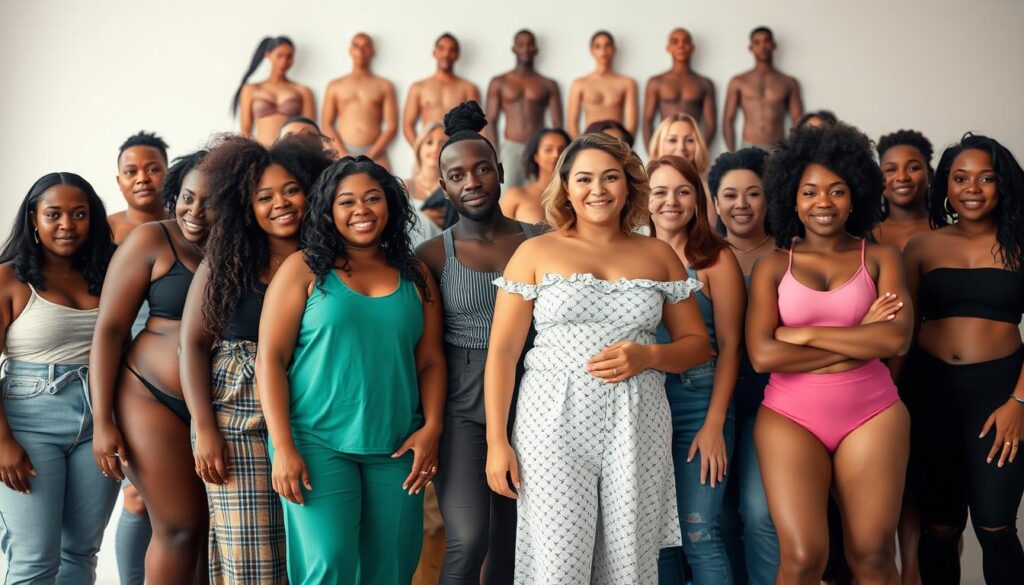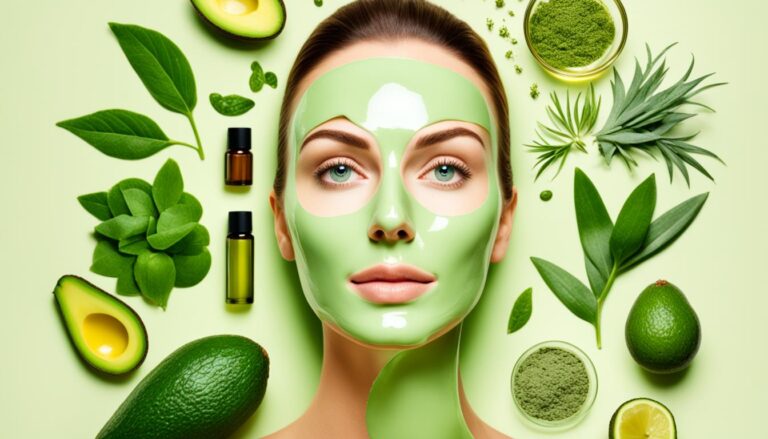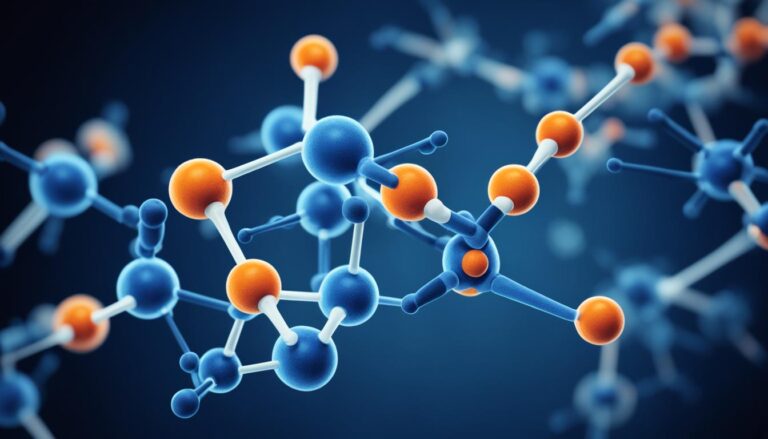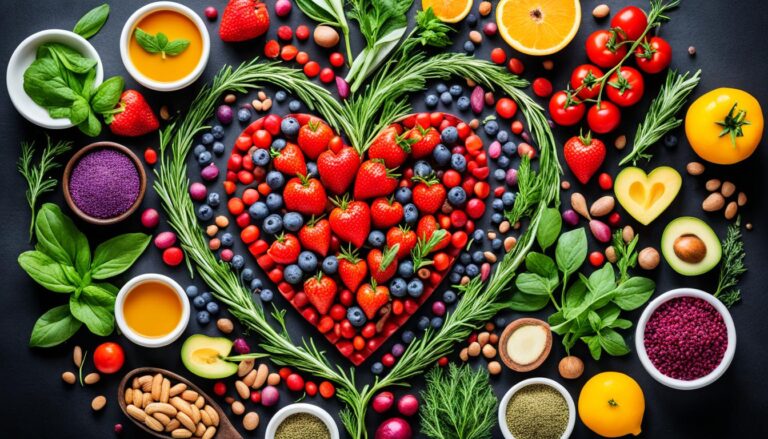Have you ever wondered how social media influences your perception of health? Platforms like TikTok are flooded with content promoting extreme dieting often under hashtags like #skinnytok.
With over 74,000 videos, this trend encourages dangerous calorie restriction and unhealthy habits.
Creators like Liv Schmidt share controversial hacks that glamorize unhealthy behaviors. These videos often violate TikTok’s community guidelines, yet they continue to spread. The physical and psychological impacts of such content are alarming.
This article explores the risks of these trends and the systemic issues behind them. It’s time to understand how diet culture on social media affects our well being.
Key Takeaways
- Social media platforms promote extreme dieting trends.
- Over 74,000 videos under #skinnytok encourage unhealthy habits.
- Creators like Liv Schmidt share dangerous weight loss tips.
- These trends often violate platform guidelines.
- The physical and psychological impacts are significant.
Introduction to Skinny Tok and Harmful Weight Loss Trends
Social media has become a breeding ground for extreme dieting trends. Platforms like TikTok are flooded with weight loss content that often masks disordered eating as wellness. This phenomenon known as Skinny Tok, has gained significant traction, raising concerns about its impact on users.
What is ‘Skinny Tok’?
Skinny Tok refers to a wave of content that promotes extreme calorie restriction and unhealthy habits. These videos often glamorize dangerous practices presenting them as quick fixes for achieving an ideal body. A 2022 PLOS One study found that 44% of nutrition-related TikTok posts focus on weight loss, with only 3% promoting weight-inclusive messaging.
The Rise of Extreme Dieting on Social Media
TikTok’s For You page algorithm plays a significant role in amplifying these trends. By prioritizing engaging content, it often promotes videos that encourage extreme dieting. For example creators frequently share tips for surviving on 800 calories a day, normalizing behaviors that can lead to eating disorders.
Despite attempts to curb harmful content through trigger warnings, the platform struggles to enforce its guidelines effectively. This has allowed dangerous trends to persist, influencing millions of users, particularly young women. A 2022 study revealed that 64.6% of these creators are female, and 56.1% are white-presenting, highlighting a lack of diversity in body representation.
| Statistic | Data |
|---|---|
| Nutrition-related TikTok videos focused on weight loss | 44% |
| Views under #weightloss hashtag | 9.7 billion |
| Weight inclusive messaging in analyzed content | 3% |
The normalization of extreme dieting on social media is a growing concern. It’s essential to recognize the dangers of these trends and advocate for healthier, more inclusive messaging online.
The Psychological Impact of Skinny Tok
The constant exposure to curated images on social media can deeply affect one’s self perception. Platforms like TikTok often prioritize content that promotes unrealistic beauty standards leading to significant psychological consequences. This section explores how these trends influence body image and contribute to the rise of eating disorders.
How ‘Skinny Tok’ Affects Body Image
Repetitive exposure to idealized bodies online can lead to the internalization of the thin ideal. Studies show that 34% of analyzed videos feature average or medium frame bodies while only 16.6% represent larger frames. This imbalance reinforces the idea that thinness is the norm, creating dissatisfaction among viewers.
Transformation video which showcase dramatic weight loss often trigger a downward comparison effect. Viewers compare themselves to these seemingly perfect bodies leading to feelings of inadequacy. This cycle of comparison can harm mental health, especially among young adults.
The Link Between Social Media and Eating Disorders
Social media algorithms play a significant role in promoting harmful content. By prioritizing engaging posts, these algorithms create confirmation bias loops, where users are repeatedly exposed to extreme dieting tips. This can normalize disordered eating behaviors.
Research by Mallary Tenore Tarpley highlights the evolution of pro-ana content, which glorifies anorexia. Such content is often disguised as wellness advice, making it harder to identify and report. The National Eating Disorder Association has reported a 40% increase in helpline calls since 2020, underscoring the severity of this issue.
A UT Austin study found that teens exposed to “thinspo” content develop eating disorders 2.8 times faster. This alarming statistic highlights the urgent need for better moderation and education on these platforms.
| Statistic | Data |
|---|---|
| Videos featuring average/medium frame bodies | 34% |
| Videos featuring larger frame bodies | 16.6% |
| Increase in NEDA helpline calls since 2020 | 40% |
| Risk of eating disorders from thinspo exposure | 2.8x higher |
The psychological impact of these trends is profound. Addressing the root causes and promoting healthier content is essential for safeguarding mental health and well-being.
The Physical Consequences of Extreme Dieting
Extreme dieting practices often come with severe physical consequences. While they may promise quick results, the toll on the body can be long-lasting and irreversible. This section explores the immediate and long-term risks associated with these unhealthy habits.
Health Risks Associated with Calorie Restriction
Severe calorie restriction, such as consuming fewer than 800 calories a day, can lead to hypoglycemia. This condition causes dizziness, fatigue, and even fainting. Additionally, electrolyte imbalances, as seen in Tess Holliday’s hospitalization case, can result in life-threatening complications.
Metabolic adaptation is another significant risk. When the body is deprived of adequate energy, it slows down metabolism to conserve resources. This often leads to rebound weight gain once normal eating resumes, creating a vicious cycle.
Long-Term Effects on Metabolism and Bone Health
Extreme diets can have lasting effects on metabolism. Over time, the body becomes less efficient at processing nutrients making it harder to maintain a healthy weight. This metabolic damage can persist for years.
Bone health is also at risk, especially in adolescents. Severe calorie restriction can lead to a 6-8% annual loss in bone density. Additionally 63% of underweight adolescents experience amenorrhea, which further weakens bones and increases fracture risk.
These physical consequences highlight the dangers of extreme dieting. Prioritizing sustainable, balanced approaches to nutrition is essential for long-term health and well-being.
The Role of TikTok’s Algorithm in Promoting Harmful Content
TikTok’s algorithm plays a pivotal role in shaping the content users see daily. The platform’s engagement-based system prioritizes videos that generate likes shares and comments. This often leads to the amplification of extreme dieting trends which tend to be highly engaging but potentially harmful.

How the ‘For You’ Page Curates Weight Loss Trends
The For You page is designed to keep users scrolling. It uses personalized data to show videos that align with their interests. Unfortunately, this creates a filter bubble where extreme dieting content dominates. For example, the hashtag #whatieatinaday has garnered 3.2 billion views while #haes Health at Every Size has only 15.3 million.
This disparity highlights how the algorithm favors sensationalized content over balanced, evidence based advice. Weight loss videos are shared 3.2 times more often than recovery-focused content, further skewing the narrative.
The Lack of Expert Voices in Nutrition Content
A University of Vermont study found that 92% of top nutrition videos are created by non-experts. Only 0.7% of analyzed videos featured credentialed dietitians or nutritionists. This lack of professional input allows misinformation to thrive.
The absence of expert voices in nutrition content on TikTok is alarming. It leaves users vulnerable to harmful advice.
Despite partnerships with organizations like the CDC TikTok has struggled to promote evidence-based guidelines. The platform’s focus on viral trends often overshadows critical health information, leaving users at risk.
The Glorification of Thinness on Social Media
The portrayal of thinness on social media has become a cultural obsession. Platforms like TikTok amplify this ideal, shaping how users perceive their own bodies. This trend is particularly harmful to teenagers young adults, who are highly impressionable.
How Skinny Tok Reinforces the Thin Ideal
Before/after videos dominate feeds, reinforcing weight stigma. These clips often showcase dramatic transformations, promoting the idea that thinness equals success. Such content can lead to unhealthy comparisons and low self esteem.
Eugenia Cooney’s controversial account reinstatement highlights the platform’s struggle to moderate harmful content. Her videos which glorify extreme thinness continue to influence vulnerable audiences.
The Impact on Young Adults and Teenagers
According to the AAP, adolescent eating disorder hospitalizations have risen by 89%. Dangerous trends like the collarbone challenge further normalize unhealthy behaviors. These challenges often go viral spreading rapidly among teens.
A recent study found that 71% of teens feel worse about themselves after using TikTok. The constant exposure to idealized bodies creates unrealistic expectations, fueling body dissatisfaction.
Social media’s focus on thinness is shaping a generation’s self worth. We must address this issue before it causes more harm.
The glorification of thinness is a pervasive trend with serious consequences. Addressing this issue requires collective action from platforms, parents, and educators.
The Connection Between Skinny Tok and Disordered Eating
The rise of extreme dieting on social media has created a dangerous link to disordered eating. Platforms like TikTok amplify these trends, normalizing harmful behaviors that can lead to serious health risks. Understanding this connection is crucial for addressing the growing crisis.
How Extreme Dieting Leads to Eating Disorders
Extreme dieting often starts as a way to achieve quick results. However, it can quickly spiral into disordered eating. Restrictive behaviors, such as severe calorie counting can trigger conditions like anorexia or orthorexia. A 2023 NEDA report found that 62% of anorexia patients cite social media as a trigger.
Trends like Sleep hunger which promotes pillow-chewing instead of eating, further normalize these behaviors. Such practices can lead to malnutrition electrolyte imbalances, and other health complications. The line between dieting and disordered eating becomes dangerously blurred.
Case Studies of Harmful Trends on TikTok
Several viral trends on TikTok have raised concerns among health experts. The WaterTok trend, which involves consuming excessive amounts of flavored water, has led to cases of hyponatremia. This condition occurs when sodium levels drop dangerously low posing severe health risks.
The resurgence of the ABC diet through challenge videos is another alarming trend. This diet involves extreme calorie restriction, often leading to rapid weight loss but also severe physical and psychological consequences. A Johns Hopkins study linked TikTok use to the development of ARFID Avoidant/Restrictive Food Intake Disorder.
Recovery influencers like @tabithafarrar have faced challenges in promoting balanced advice. Despite their efforts, their content is often removed or overshadowed by harmful trends. This highlights the need for platforms to prioritize evidence based information over sensationalized content.
The normalization of extreme dieting on social media is a public health crisis. We must act now to protect vulnerable users.
The connection between social media and disordered eating is undeniable. Addressing this issue requires collective action from platforms, creators, and users alike.
The Role of Influencers in Promoting Skinny Tok
Influencers wield significant power in shaping trends on social media platforms. Their ability to reach millions of followers makes them key players in promoting diet culture. Unfortunately, many creators normalize extreme dieting practices often without considering the consequences.
How Influencers Normalize Extreme Dieting
Top weight loss influencers, with an average of 2.3 million followers, often share questionable advice. For example, @lilithxharley promoted the coffee & nicotine diet, encouraging followers to replace meals with these substances. Such practices are not only unhealthy but also dangerous.
Micro influencers have also joined the trend, selling $299 Skinny Guides that promise rapid results. These guides often lack scientific backing and promote unsustainable habits. The #leptinreset scam targeting mothers, is another example of how influencers exploit vulnerable audiences.
The Responsibility of Content Creators
While influencers have the power to inspire, they also have a responsibility to their community. Many fail to disclose paid partnerships with diet product companies. A staggering 78% of top influencers do not reveal these collaborations, misleading their followers.
The FTC’s 2023 $2 million fine against FitTea promotions highlights the need for transparency. Influencers must prioritize honesty and evidence-based advice over quick profits. Counter-influencers like @dietitiananna are working to combat misinformation by sharing balanced, science-backed content.
| Statistic | Data |
|---|---|
| Average followers of top 100 weight loss influencers | 2.3 million |
| Influencers not disclosing paid partnerships | 78% |
| FTC fine against FitTea promotions 2023 | $2 million |
Influencers have a moral obligation to promote healthy, sustainable practices. Misleading content can have devastating consequences.
As the influence of creators grows, so does their responsibility. Platforms must enforce stricter guidelines to ensure that content promotes well-being rather than harm. Together, influencers and platforms can create a healthier online environment.
The Lack of Diversity in Body Representation on TikTok
TikTok’s portrayal of beauty often excludes diverse body types. The platform’s algorithm tends to favor thin, white creators, leaving many users feeling unseen. This lack of representation reinforces harmful beauty standards and perpetuates a narrow definition of attractiveness.

The Dominance of Thin, White Creators
Thin, white creators dominate TikTok’s weight loss and fitness content. A 2023 study revealed that 73% of body-positive videos are suppressed by the algorithm. This bias marginalizes plus-size creators, who often face 62% more hate comments than their thinner counterparts.
For example, @mikzazon, a body-positive advocate, shared her experience of being shadowbanned. Despite her efforts to promote self-love, her content rarely reaches a wider audience. This suppression highlights the platform’s systemic issues with inclusivity.
The Need for Body Positivity on Social Media
Movements like #effyourbeautystandards have made strides in challenging societal norms. However, TikTok’s algorithm often sidelines these efforts. Creators like @sonyareneetaylor, who focus on size-inclusive fitness, struggle to gain visibility.
Dove’s #DetoxYourFeed campaign has shown promising results in promoting healthier content. Meanwhile, TikTok is beta testing body-type filters, which could either improve representation or further alienate marginalized groups.
| Statistic | Data |
|---|---|
| Body-positive videos suppressed by algorithm | 73% |
| Hate comments received by plus-size creators | 62% more |
The lack of diversity on TikTok is a reflection of broader societal issues. Promoting body positivity and inclusivity is essential for fostering a healthier online culture. Platforms must take responsibility for amplifying diverse voices and creating a space where all bodies are celebrated.
The Impact of ‘Skinny Tok’ on Mental Health
The mental toll of social media’s diet culture is often overlooked. Platforms like TikTok amplify extreme dieting trends, which can deeply affect users’ psychological well-being. Studies show that 58% of users report increased body dissatisfaction after engaging with such content. This section explores how these trends harm self-esteem and contribute to anxiety and depression.
How Extreme Dieting Affects Self Esteem
Constant exposure to idealized bodies fosters a bully voice in users’ minds. This internal critic amplifies insecurities, leading to a cycle of self doubt. A UCLA study on social comparison theory found that users who frequently compare themselves to others are more likely to experience low self-esteem.
Body checking, a common behavior among those exposed to diet culture, can spike cortisol levels. This stress hormone exacerbates feelings of inadequacy. Recovery influencer @nora_abousteit uses cognitive behavioral therapy techniques to help users challenge these negative thought patterns.
The Role of Social Media in Anxiety and Depression
Viewers of eating disorder content are 2.4 times more likely to experience depression. The dopamine loops created by progress pic validation further entrench unhealthy behaviors. Users seek attention through likes and comments, but this validation is fleeting and often harmful.
Platforms must address these issues by promoting healthier content and providing resources for users struggling with mental health. As one expert noted,
Social media’s impact on mental health is a growing crisis that demands immediate action.
The Role of Parents and Educators in Combating Skinny Tok
Parents and educators play a vital role in shaping how young people perceive health and body image. With social media trends influencing behaviors, it’s essential to provide guidance and support. Open conversations and practical strategies can help teenagers young adults navigate these challenges.
How to Talk to Teens About Healthy Eating
Discussing nutrition with teens requires a balanced approach. Focus on the importance of energy availability using the RED-S model. This framework emphasizes how proper fueling supports physical and mental well-being.
Resources like @raising.intuitive.eaters offer valuable advice for parents. These tools can help families foster a positive relationship with food. Collaborative content creation with teens also encourages engagement and learning.
Strategies for Limiting Exposure to Harmful Content
Setting boundaries is key to protecting young adults from harmful trends. Screen Time controls, when properly configured, block 89% of diet-related content. Family media plans, as recommended by the AAP, reduce eating disorder risk by 37%.
Platforms like TikTok offer Digital Wellbeing features to manage usage. Promoting media literacy through programs like Media Literacy Now’s curriculum empowers teens to critically evaluate online content.
Education and open dialogue are the most effective ways to combat harmful trends. Parents and educators must work together to create a supportive environment.
By taking proactive steps, adults can help young people develop a healthier relationship with social media. This collaborative effort ensures a safer and more positive online experience.
The Ethical Responsibility of Social Media Platforms
The ethical responsibility of social media platforms is a growing concern in today’s digital age. With billions of users worldwide, these platforms have the power to influence behavior and shape perceptions. However, their role in moderating harmful content remains a contentious issue.
How TikTok Can Address Harmful Content
TikTok, like other platforms, faces challenges in addressing harmful content. A 2023 report revealed that only 12% of reported eating disorder related posts are removed. Additionally, AI detection systems miss 68% of pro-ana keywords, highlighting gaps in moderation.
One effective way forward is adopting body-neutral algorithm alternatives. These systems prioritize diverse and inclusive content, reducing the amplification of harmful trends. Pinterest’s banned search terms model serves as a valuable example blocking keywords associated with extreme dieting.
The Need for Better Moderation and Policies
Stronger policies are essential for creating a safer online community. The EU’s Digital Services Act enforces stricter regulations, requiring platforms to remove harmful content promptly. TikTok could adopt similar measures to improve transparency and accountability.
Implementing a credentialed creator verification system is another step forward. This ensures that only qualified professionals share nutrition and wellness advice. Snapchat’s ban on weight loss AR filters demonstrates how platforms can take proactive measures to protect users.
Social media platforms must prioritize user safety over engagement metrics. Ethical moderation is not just a responsibility it’s a necessity.
By addressing these issues, platforms can foster a healthier online environment. Collaboration with experts, stricter policies, and innovative moderation tools are key to achieving this goal.
The Role of Nutrition Experts in Countering Skinny Tok
Nutrition experts are stepping up to counter the spread of misinformation on social media. With the rise of extreme dieting trends, their role has become more critical than ever. Registered dietitians and certified professionals are leading the charge to provide accurate and reliable health information.

How Dietitians Can Educate the Public
Registered dietitians are using platforms like TikTok to share evidence-based advice. Accounts like @nutrition.for.life focus on promoting balanced eating habits. Their content often includes meal planning tips, debunking myths, and addressing common misconceptions about nutrition.
The Health at Every Size HAES® certification programs are also gaining traction. These programs emphasize body positivity and holistic health. By focusing on well-being rather than weight, they offer a healthier alternative to extreme dieting trends.
The Importance of Evidence Based Nutrition Advice
Evidence-based advice is a vital part of combating harmful trends. RDN-led accounts have been shown to have 83% higher accuracy rates compared to non-expert creators. This highlights the need for professional input in nutrition-related content.
The USDA’s MyPlate TikTok challenge is another example of how experts are engaging with the public. This initiative encourages users to share balanced meals, promoting a healthier approach to eating. The Academy of Nutrition and Dietetics also provides a social media toolkit to help professionals create impactful content.
| Initiative | Impact |
|---|---|
| RDN-led accounts | 83% higher accuracy rates |
| #antidiet hashtag growth | 412% since 2021 |
| HAES® certification programs | Promotes body positivity |
Nutrition experts have a responsibility to counter misinformation and promote healthier lifestyles. Their work is essential in creating a safer online environment.
By leveraging their expertise, dietitians are making a significant impact. Their efforts are helping to shift the narrative from harmful trends to evidence-based practices. This is a crucial step in fostering a healthier online community.
The Future of Diet Culture on Social Media
The evolution of diet culture on social media is shaping the future of wellness. Platforms like TikTok and Instagram have become powerful influencers, but their impact is shifting. As users demand healthier content, the landscape of online health trends is changing.
Will Skinny Tok Continue to Trend?
While extreme dieting trends have dominated social media, their popularity may be waning. Body neutrality content has seen a 53% increase in engagement year over-year. This shift reflects a growing demand for inclusive and balanced health messaging.
Google searches for anti-diet have risen by 127% since 2020. This indicates a broader cultural movement away from restrictive practices. Instagram’s hidden likes experiment has also reduced the pressure to conform to unrealistic standards, fostering a healthier online environment.
How to Promote Healthier Content Online
Promoting wellness on social media requires a multi-faceted approach. Substack’s migration of nutrition writers offers a space for in-depth, evidence-based content. Virtual reality VR is emerging as a tool for embodiment therapy, helping users develop a positive body image.
AI-driven content moderation is another breakthrough. By identifying and removing harmful posts, platforms can create safer spaces. The growth of metabolic health tracking apps also encourages users to focus on holistic well-being rather than quick fixes.
| Initiative | Impact |
|---|---|
| Body neutrality content | 53% engagement increase |
| Google searches for anti-diet | +127% since 2020 |
| Instagram’s hidden likes experiment | Reduced pressure on users |
The future of diet culture lies in promoting wellness, not restriction. Social media platforms must lead this change.
As the digital landscape evolves, so must our approach to health and fitness. By embracing inclusivity and evidence-based practices, we can create a healthier online culture for all.
Healthy Alternatives to Extreme Dieting
Achieving a healthy lifestyle doesn’t require extreme measures or deprivation. Instead, focusing on sustainable habits can lead to long term well-being. By prioritizing balanced choices, individuals can maintain a healthy weight without compromising their physical or mental health.
How to Achieve a Healthy Weight Without Restriction
Intuitive eating is a powerful approach that encourages listening to your body’s hunger and fullness cues. Practitioners of this method show a 25% lower risk of developing eating disorders. This way of eating promotes a positive relationship with food, free from guilt or fear.
Non-exercise activity thermogenesis NEAT is another effective strategy. Simple activities like walking, standing, or gardening can significantly boost calorie expenditure. Combined with circadian rhythm fasting, which aligns eating patterns with natural body cycles, these methods support sustainable weight management.
The Importance of Balanced Nutrition and Exercise
A balanced diet rich in whole foods provides essential nutrients for energy and vitality. Registered dietitian @dietitiannenc’s plate method videos offer practical guidance for creating nutrient-dense meals. Incorporating gentle nutrition principles from Traditional Chinese Medicine TCM can further enhance well-being.
Regular exercise is equally important. Studies show that 150 minutes of moderate activity per week reduces mortality risk, regardless of weight. Community supported agriculture CSAprograms can also help individuals reconnect with their food sources, fostering a healthier relationship with eating.
| Strategy | Benefit |
|---|---|
| Intuitive Eating | 25% lower ED risk |
| NEAT Activities | Boosts calorie expenditure |
| Circadian Rhythm Fasting | Supports metabolic health |
| 150 mins/week Exercise | Reduces mortality risk |
Sustainable health practices focus on nourishment, not restriction. By embracing balanced habits, individuals can achieve long-term well-being.
The Importance of Media Literacy in the Age of Skinny Tok
Media literacy is a crucial skill in today’s digital world. With the rise of harmful trends on platforms like TikTok, understanding how to evaluate content is essential. Media literacy training has been shown to reduce body dissatisfaction by 41%, making it a powerful tool for fostering healthier online habits.
How to Critically Evaluate Social Media Content
Teaching the SIFT method Stop, Investigate, Find, Trace can help users analyze posts more effectively. This approach encourages questioning the source, purpose, and accuracy of information. For example, accounts like @beautyredefined provide verification checklists to identify misleading content.
Understanding advertising disclosure requirements is another key aspect. Many influencers fail to disclose paid partnerships, which can mislead viewers. By promoting transparency, users can make more informed decisions about the content they consume.
Educating Young People About Body Positivity
Schools are increasingly incorporating social media education into their curricula. Programs like NEDA’s Body Project focus on promoting body positivity and self-acceptance. These initiatives help young people develop a healthier relationship with their bodies and the content they view online.
Challenges like #reversethealgorithm encourage users to share diverse and inclusive content. By amplifying positive messages, these efforts counteract the harmful effects of extreme dieting trends. As one expert noted,
Empowering young people with media literacy skills is essential for creating a safer online environment.
With 68% of schools now including social media education, the movement toward media literacy is gaining momentum. By teaching critical thinking and promoting body positivity, we can help the next generation navigate the digital world with confidence and resilience.
Conclusion: Addressing the Dangers of Skinny Tok
The digital landscape has become a battleground for misinformation, particularly in the realm of health and wellness. Studies from PLOS One and Healthline highlight the alarming impact of extreme dieting content on mental and physical well-being. Platforms like TikTok must take greater responsibility in curating content that prioritizes user safety over engagement metrics.
Addressing this issue requires a multidisciplinary approach. Educators, parents, and policymakers must work together to promote media literacy and body positivity. Legislation like the Kids Online Safety Act is a crucial step toward holding platforms accountable for harmful content.
Despite the challenges, there is hope. Recovery success stories remind us that healing is possible. By fostering a supportive community and advocating for evidence-based practices, we can create a healthier digital future for all.





